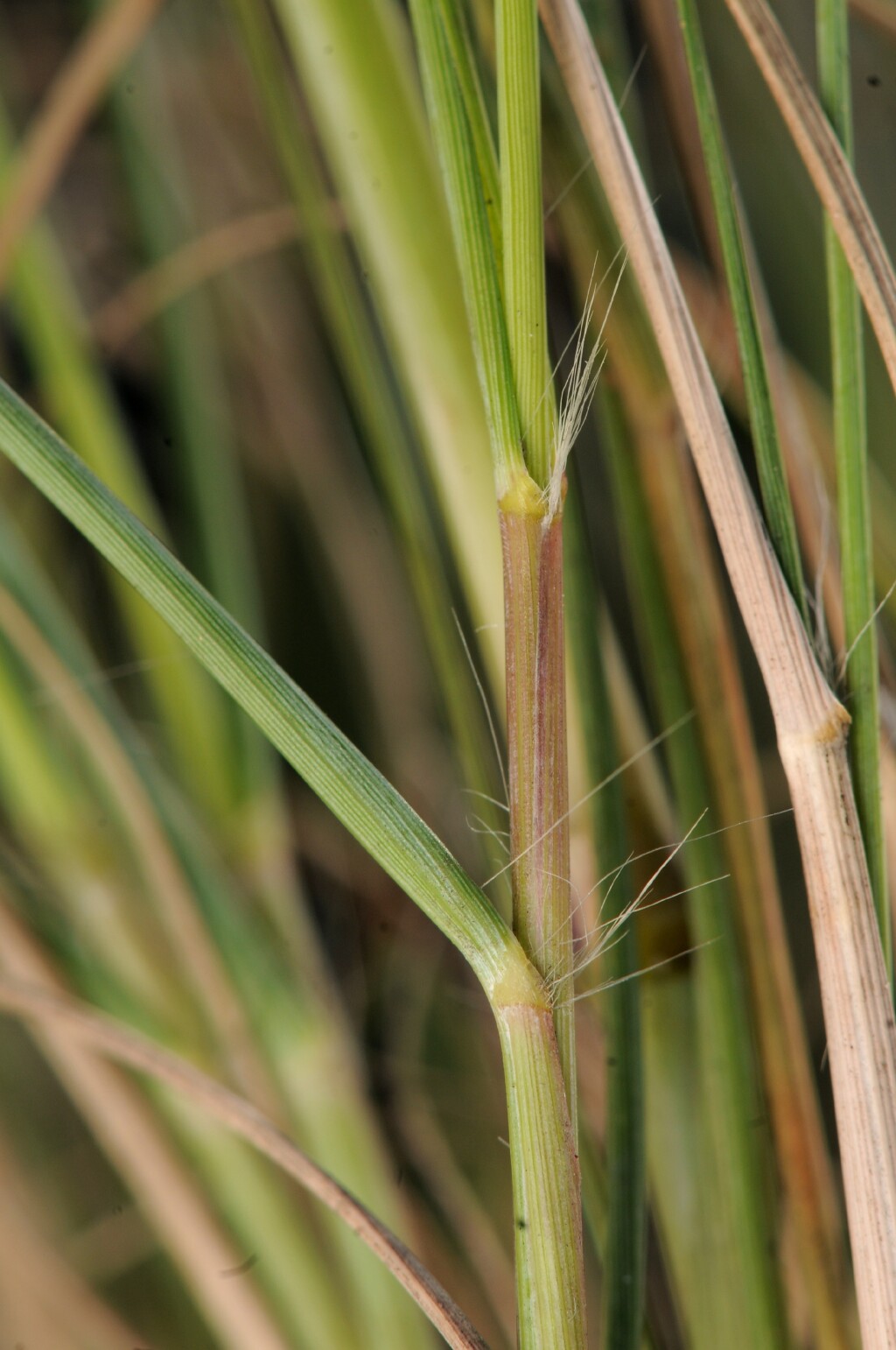Eragrostis curvula
(Schrad.) Nees African Love-grassTufted perennial, often forming pure dense swards, culms erect, to 120 cm high. Leaves smooth; blade folded or inrolled, to 30 cm long and 3 mm wide, narrowly tapered and often curled near tips; sheath yellowish or purplish, hairy. Inflorescence a contracted or open panicle, to 30 cm long and 20 cm wide, lower branches single. Spikelets 4–13-flowered, 4–10 mm long and 1–1.5 mm wide, leaden-green coloured; glumes membranous, minutely scabrous along the keel, acute, the lower 1–2 mm long, the upper usually longer by 0.5–1 mm; lemma 1.8–2.8 mm long, broadly acute; palea slightly shorter than lemma, splitting along the midline as the grain matures; anthers c. 1 mm long. Flowers mainly Nov.–Apr.
LoM, MuM, Wim, GleP, VVP, VRiv, MuF, GipP, OtP, Gold, CVU, DunT, NIS, EGL, EGU, HSF, HNF, Strz, VAlp. Naturalised in all mainland States. Introduced from southern Africa. Formerly known from a few scattered localities in the State, the species has become an abundant weed along roadsides in many areas (very prominent along the Hume and Frankston freeways), and in pasture where particularly troublesome due to its ability to form a dense sward to the exclusion of other more desirable cropping or grazing species.
Walsh, N.G. (1994). Poaceae. In: Walsh, N.G.; Entwisle, T.J., Flora of Victoria Vol. 2, Ferns and Allied Plants, Conifers and Monocotyledons, pp. 356–627. Inkata Press, Melbourne.
 Spinning
Spinning




